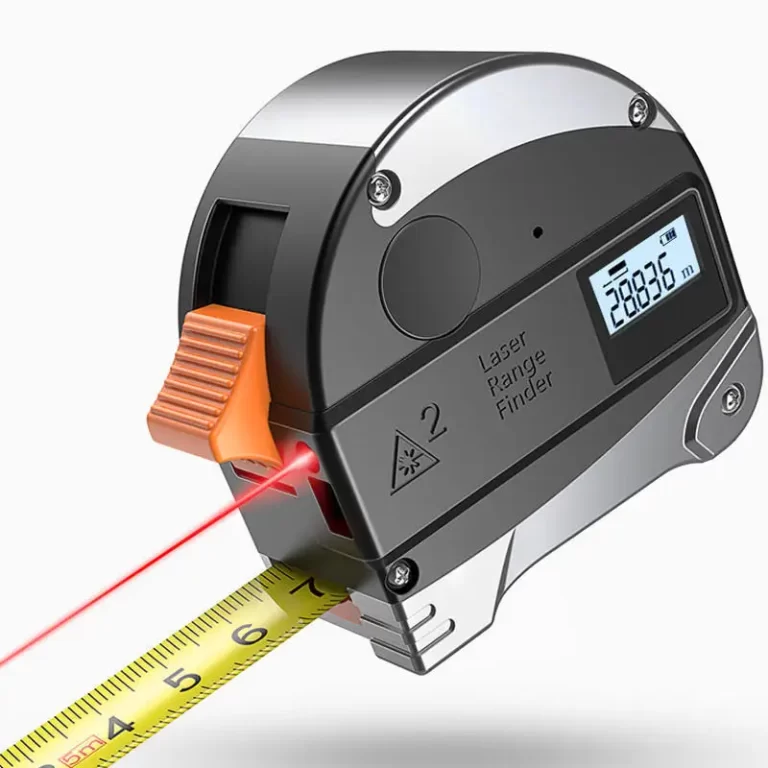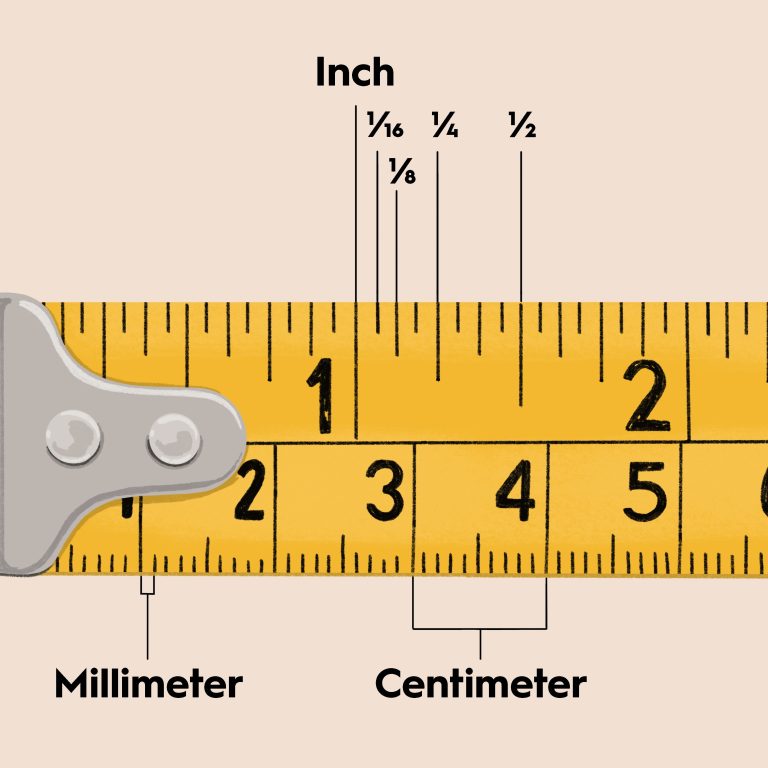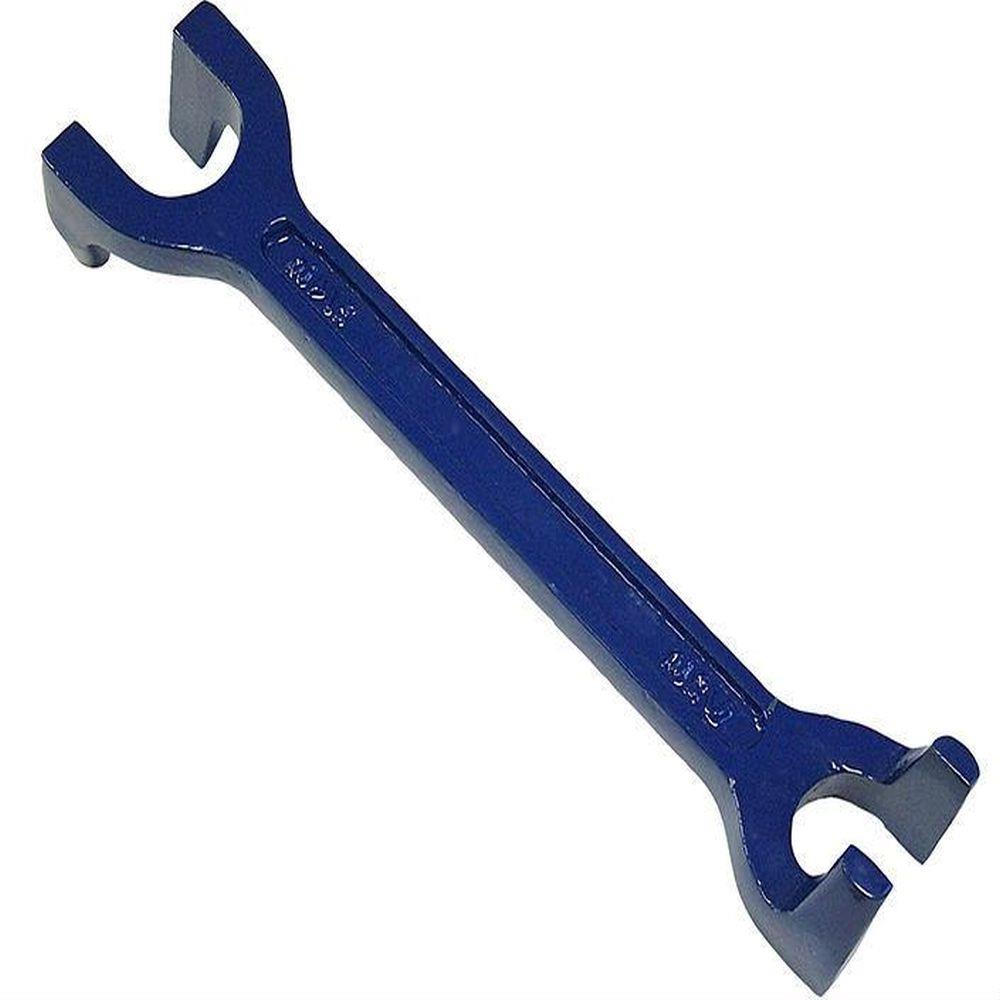
Mastering Basin Wrench Use in Plumbing: Essential Techniques
Introduction
Understanding basin wrenches is key for anyone delving into plumbing tasks. This tool is essential for gripping and turning fasteners in tight spaces. We will explore the basics, including the definition and necessity of a basin wrench in plumbing scenarios.

What Is a Basin Wrench?
A basin wrench is a specialized plumbing tool. It has a long handle and a claw-like head. It reaches nuts and fittings that are tough to access with other wrenches. With its swiveling jaw, you can grip and turn fasteners with ease. This tool makes it possible to work on plumbing fixtures under sinks and in confined spaces.
When Do You Need a Basin Wrench?
A basin wrench becomes necessary when you tackle sink-related plumbing. This includes installing or removing faucets, replacing sink hoses, or working with supply line nuts. When the space is too narrow for standard tools, a basin wrench shines. Professionals and DIY enthusiasts alike rely on it for kitchen and bathroom plumbing jobs.
Types of Basin Tool Wrenches
Selecting the right type of basin wrench is critical for efficient work in tight spaces. Below are the types of basin wrenches you should know about.
Fixed Basin Wrenches
Fixed basin wrenches are the simplest form. They feature a solid, non-adjustable shaft with a fixed jaw size. Choose this type for standard nuts of a known size. They are often less expensive but less versatile.
Telescopic Basin Wrenches
Telescopic basin wrenches offer more flexibility. They have an extendable shaft allowing for length adjustment. This feature is useful for reaching into deeper or variable distances. It makes the tool adaptable to different task requirements.
Adjustable Basin Wrenches
Adjustable basin wrenches are the most versatile. They come with a movable jaw to fit a range of nut sizes. This adjustability is excellent for tasks requiring different wrench sizes. You save time and space in your toolbox with this multi-purpose option.
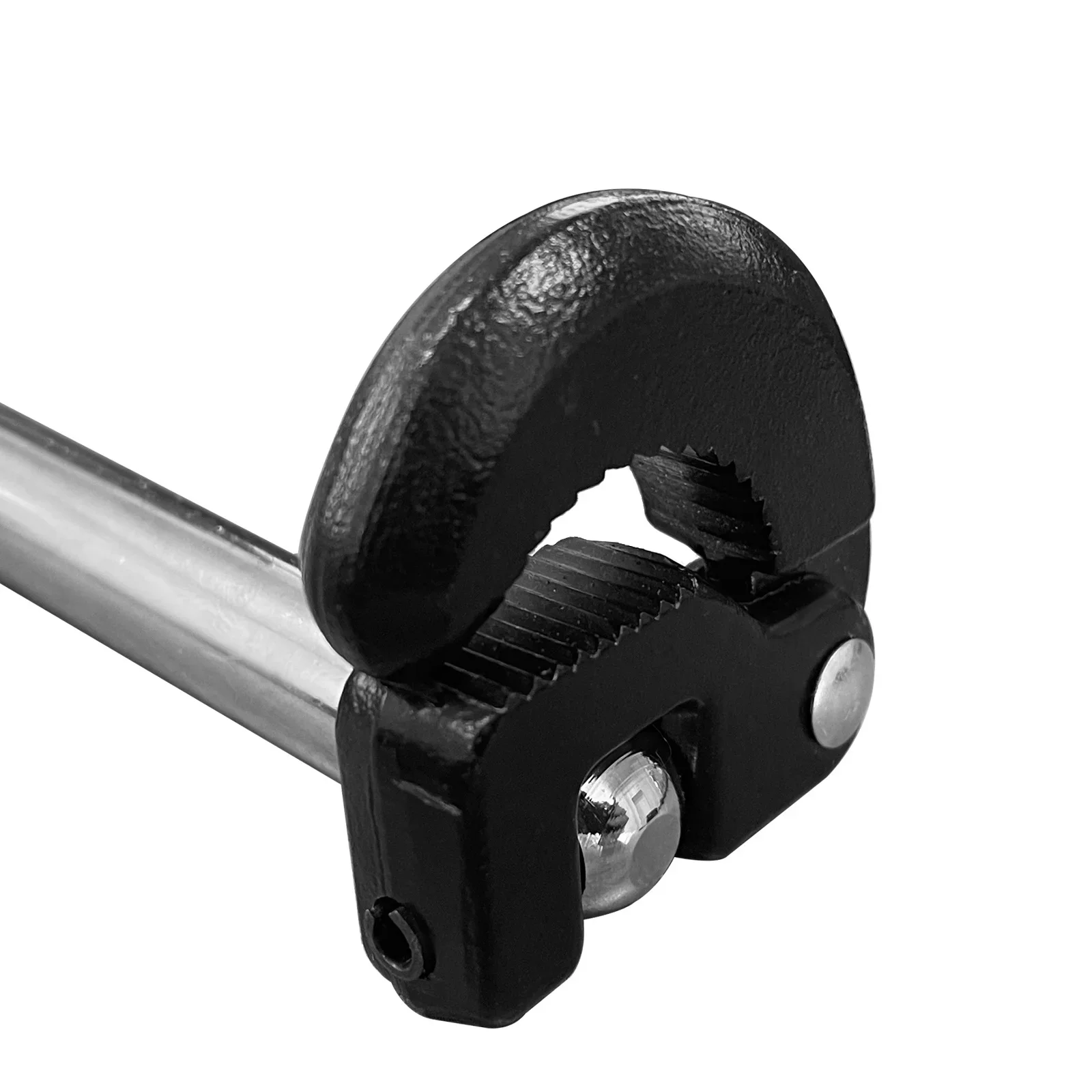 Choosing the Right Basin Tool Wrench for the Job
Choosing the Right Basin Tool Wrench for the Job
Choosing the right basin wrench can make your plumbing task much easier. Here are things to consider and some recommended basin wrench brands and models.
Factors to Consider When Selecting a Basin Wrench
When picking out a basin wrench, you need to keep several factors in mind:
- Size of the Nuts and Fittings: Make sure the wrench fits the sizes you’ll work with.
- Space Constraints: Consider the wrench length for the space where you’ll use it.
- Material Quality: A durable material will ensure your wrench lasts longer.
- Handle Comfort: An ergonomic handle can reduce hand fatigue during lengthy jobs.
- Adjustability: An adjustable wrench adds versatility for different tasks.
- Price: Weigh the wrench’s cost against its features and your budget.
Recommended Brands and Models
Many brands offer quality basin wrenches. Here are a few top picks:
- Ridgid: Known for reliability, their telescopic basin wrenches are user-friendly.
- TEKTON: Offers solid, well-crafted wrenches at an affordable price.
- Milwaukee: Their adjustable models are a favorite for their durability and ease of use.
Remember to look for wrenches that meet your specific needs. This way, you ensure your plumbing projects are a success. Always check customer reviews for a real-world take on tool performance.
Step-by-Step Guide to Using a Basin Tool Wrench
Proper use of a basin wrench will ensure efficiency and safety. Follow this step-by-step guide to master the use of this invaluable tool.
Preparing Your Work Area
Before using a basin wrench, prepare your work area:
- Clear the area under the sink of any items that may obstruct access.
- Clean off any dirt or grime on the fittings to see them clearly.
- Place a bucket underneath to catch any drips when disconnecting water lines.
- Ensure adequate lighting; use a flashlight if needed to improve visibility.
Safety tip: Wear gloves to protect your hands and safety glasses to shield your eyes.
Positioning the Wrench Correctly
To use a basin wrench effectively, position it properly:
- Open the jaw of the wrench and hook it onto the nut or fitting.
- Adjust the jaw to ensure a snug grip on the fastener.
- Position the handle so you can turn it with leverage.
- If needed, extend the handle for extra reach in deep spaces.
Always double-check that the wrench is seated correctly to avoid slipping.
Tips for Loosening and Tightening Fittings
When working with a basin wrench, keep these tips in mind:
- To loosen a fitting, turn the wrench counterclockwise.
- For tightening, turn the wrench clockwise.
- Apply steady pressure to avoid damaging the nuts or surrounding area.
- If a nut is stuck, apply a penetrating lubricant and wait a few minutes.
- Do not force the wrench; if a nut won’t budge, reassess your approach.
Remember that patience and the correct basin wrench technique will make the job smoother.
 Troubleshooting Common Basin Tool Wrench Issues
Troubleshooting Common Basin Tool Wrench Issues
Dealing with plumbing issues typically requires a reliable basin wrench. But what if you encounter problems using the tool itself? Here, we’ll cover common basin wrench issues and how to solve them.
Dealing with Tight Spaces
Tight spots are common in plumbing. Here’s how to handle them:
- Right-angle adapters: Use these if your basin wrench can’t fit.
- Mini basin wrenches: They are designed for very small spaces.
- Flexible shaft: Some basin wrenches have a flexible shaft to maneuver better.
- Patience is vital: Take your time to position the wrench correctly.
Position the wrench carefully, adjust the jaw when needed, and steadily apply force to turn fittings.
Overcoming Corroded Fittings
Rust and corrosion on fittings can be a challenge. Here’s what to do:
- Penetrating oil: Apply it to the corroded area. Let it sit. Then try to turn the fitting.
- Tap lightly: Gently tap the fitting with a hammer to break the rust.
- Heat: Sometimes, applying heat can loosen a fitting. But be cautious.
Remember, safety first. If you can’t loosen a fitting, it may be time to call a professional. Avoid excess force to prevent damage to the plumbing.
Caring for Your Basin Tool Wrench
To keep your basin wrench in top condition, proper care is essential.
Cleaning and Maintenance
Follow these simple steps for cleaning and maintaining your basin wrench:
- Wipe the tool clean after each use. Remove any dirt or grime.
- Check the jaw and moving parts. Make sure they move freely.
- Apply a drop of oil to joints for smooth operation.
- Inspect for rust. If you find any, use a rust remover.
- Store the wrench dry. Moisture can lead to rust and damage.
By regularly cleaning and lubricating your basin wrench, you ensure its longevity and performance.
Proper Storage Practices
Storing your basin wrench correctly will protect its integrity. Here’s what to do:
- Hang it up. Use a tool rack or pegboard for easy access.
- Don’t throw it in a crowded toolbox. This could damage the tool.
- Keep it in a cool, dry place to prevent rust.
- If possible, store it in a case or a drawer with soft lining.
With proper storage, your basin wrench will remain a reliable tool for many plumbing projects.
Alternatives to Basin Tool Wrenches: When and How to Use Them
While basin wrenches are highly effective for specific plumbing tasks, there are situations where alternative tools may be more suitable. Here are some alternatives and when to use them:
Adjustable Wrenches
Adjustable wrenches are versatile tools that can be used for a wide range of plumbing tasks. While they may not reach as far as basin wrenches in tight spaces, they are excellent for tasks that require frequent size adjustments and flexibility.
Pipe Wrenches
Pipe wrenches are designed for gripping and turning pipes, making them ideal for tasks involving larger plumbing fixtures. They offer more torque than basin wrenches but are bulkier and less suited for confined spaces.
Strap Wrenches
Strap wrenches use a flexible strap to grip objects, providing a non-slip hold without damaging the surface. They are useful for delicate or irregularly shaped fittings that a basin wrench might struggle to grip securely.
Pliers
Pliers, including slip-joint and tongue-and-groove varieties, can be used for holding, twisting, and turning nuts and bolts in situations where a basin wrench is too large or cumbersome. They offer more control for smaller fittings.
Socket Wrenches
Socket wrenches provide high torque and are suitable for larger nuts and bolts. They require matching socket sizes but offer a reliable grip and leverage for extensive plumbing projects.
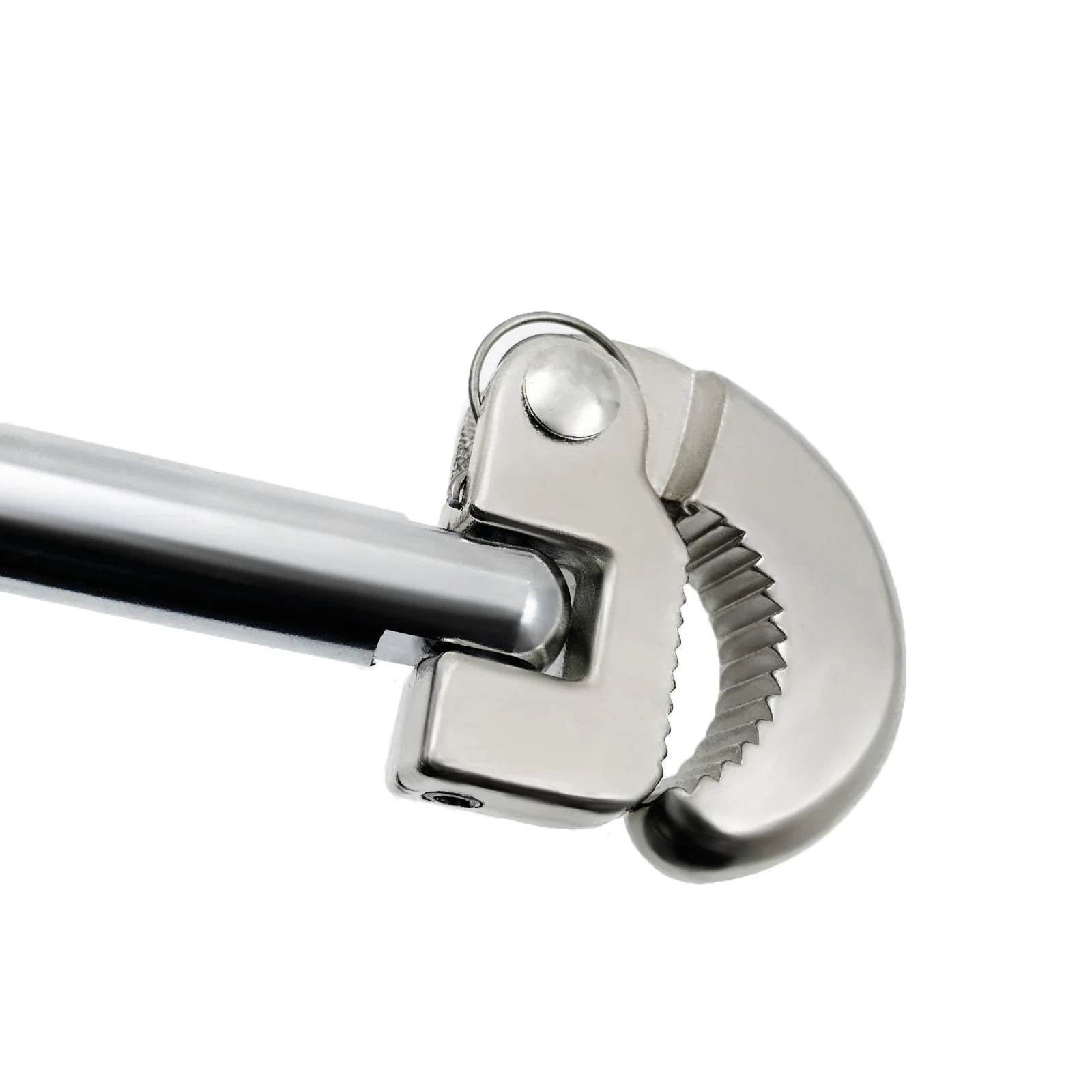 The Future: Innovations and Trends
The Future: Innovations and Trends
As plumbing technology evolves, so do the tools designed to support it. The basin wrench is no exception, with ongoing innovations and trends shaping its future.
Ergonomic Improvements
Manufacturers are continuously improving the ergonomic design of basin wrenches to enhance comfort and reduce hand fatigue. Features such as contoured handles, soft grips, and balanced weight distribution are becoming standard, making the tool easier and more comfortable to use for extended periods.
Modular and Multi-Functional Designs
Modern basin wrenches are increasingly becoming modular and multi-functional, allowing plumbers to adapt the tool to various tasks. Interchangeable heads and adjustable components provide greater versatility, reducing the need for multiple specialized tools.
Advanced Materials
The use of advanced materials is enhancing the durability and performance of basin wrenches. Lightweight yet strong materials like high-grade steel alloys and corrosion-resistant coatings are being incorporated to extend the tool’s lifespan and improve its resilience in harsh plumbing environments.
Integrated Technology
Some innovative basin wrenches now feature integrated technology, such as built-in torque indicators or adjustable tension settings. These advancements provide greater precision and control, helping plumbers achieve the exact torque needed for each connection.
Sustainable Manufacturing Practices
Sustainability is becoming a significant focus in tool manufacturing. Basin wrench manufacturers are adopting eco-friendly materials and sustainable production practices to reduce their environmental impact. This includes using recycled metals, minimizing waste, and implementing energy-efficient manufacturing processes.
Frequently Asked Questions
To further assist you in understanding basin wrenches, here are some frequently asked questions answered in detail:
What is a basin wrench used for?
A basin wrench is primarily used for tightening and loosening nuts and bolts in tight and confined spaces, such as underneath sinks and basins. It is especially useful for plumbing tasks like installing or replacing faucets and repairing leaky pipe connections.
How do you use a basin wrench?
To use a basin wrench, position the jaws around the nut you want to tighten or loosen. Adjust the wrench to fit the size of the nut, then use the long handle to apply steady pressure. Utilize the pivoting head to maintain the correct angle and leverage, turning the wrench until the nut is secure or removed.
What are the different types of basin wrenches?
There are several types of basin wrenches, including standard basin wrenches, adjustable basin wrenches, ratcheting basin wrenches, and basin wrenches with extended handles. Each type caters to different plumbing needs and preferences, offering varying levels of flexibility and control.
Can a basin wrench be used for other tasks?
While basin wrenches are specifically designed for plumbing tasks, they can be adapted for use in other scenarios that require reaching and turning nuts and bolts in confined spaces. However, they may not be as effective as specialized tools for tasks outside their intended use.
How do you maintain a basin wrench?
Maintaining a basin wrench involves regular cleaning, lubricating moving parts, inspecting for wear and tear, and storing it properly in a dry place. Avoid exposing the wrench to excessive moisture to prevent rust and corrosion, and address any damage promptly to ensure continued functionality.
 Conclusion
Conclusion
Investing in a high-quality basin wrench is essential for anyone involved in plumbing, from professional plumbers to enthusiastic DIYers. This specialized tool offers unparalleled reach and leverage, making it indispensable for tackling tight spaces and complex plumbing tasks. By understanding the different types, effective usage techniques, and proper maintenance, you can maximize the efficiency and longevity of your basin wrench.
Moreover, staying informed about the latest innovations and trends ensures that you have access to the best tools available, keeping your plumbing projects smooth and hassle-free. Whether you’re installing a new faucet, repairing a leaky pipe, or conducting regular maintenance, a basin wrench is a reliable and versatile addition to your tool arsenal.
Embrace the capabilities of a basin wrench and enhance your plumbing skills, ensuring that every project you undertake is completed with precision and ease. With the right basin wrench in hand, you can confidently handle any plumbing challenge, making your home improvement efforts more successful and less stressful.
